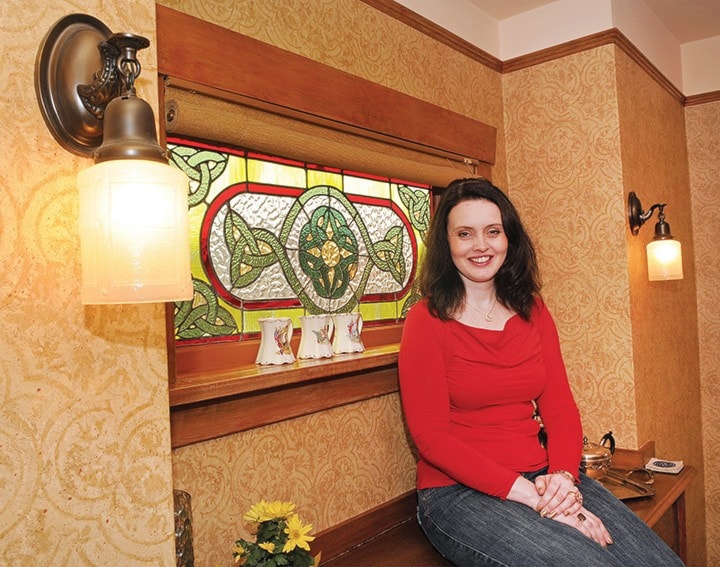Lara Hurrell fell in love with James Bay when she was staying in an older home that had been converted into apartments.
So when it came time for her to look for a home to purchase, she knew what she wanted: to stay in the neighbourhood and to find a heritage home.
Last fall she moved into a cozy James Bay house built around 1910. Finding a place that was not only full of character, but “move-in ready” was like a dream, she says.
“The home inspector told me (this) was a real gem,” she says. “I really kind of hit the jackpot with this home.”
The previous owner had done a fair amount of restoration work, from replacing the flooring with hardwood Douglas fir to returning the windows to their original leaded stained glass style and installing various updated but period-style fixtures. Despite its relatively small size, the home has three bedrooms and plenty of room for what she needs, Hurrell says.
She advises people looking to purchase heritage or character homes to do their research and make sure they know what they’re getting into.
“The initial house I saw, I knew it needed a lot of work,” she said, adding her realtor advised her that home might eat up a lot of her savings. “I was lucky. This one was move-in ready.”
In her research with the Victoria-based Hallmark Heritage Society, Hurrell, who was specifically looking for an older house, found her future home had been moved from across the street and was raised in 1929.
Dave Layzell and his wife, Sharon, recently sold Dashwood Manor, a large bed and breakfast on Cook Street at Dallas Road, after operating it for eight years.
He says older homes have a special appeal and keep people rooted in the past.
“When you do live in that kind of heritage home, it is very difficult to ignore the sensation of knowing there’s been several generations of people living there before you,” he says.
As Hurrell found, not all heritage homes are created the same or are in the same condition. But veteran realtor Patrick Skillings says the numerous well-kept heritage homes in the region are a big part of maintaining the visual appeal of our city from a tourism standpoint.
“Victoria is the No. 1 city for heritage retention in B.C. by far,” he says, noting that New Westminster is a distant second. “The beauty of older homes is the streetscape they engender and the image they project to the world.”
Skillings is a definite fan. He is a director on the Hallmark society, the Capital Region’s watchdog for built heritage preservation, and spent eight years on the board of the Victoria Heritage Foundation, a City of Victoria program that educates owners of character homes about available restoration grants and the heritage designation process.
While the market for heritage homes can be tricky to navigate – younger buyers are more likely to be interested in newer homes, he admits – there will always be buyers looking for the unique materials – like solid wood – and design features that older homes include.
“Assuming the house is well-maintained, the quality of construction will win the day,” he says.
Hurrell, who lived in Calgary previous to her apartment stint, put to rest the misconception that owners of designated heritage homes are handcuffed by regulations when it comes to making alterations.
“A lot of people are under the impression you can’t change the interior of the house and that’s generally not the case,” she says. “Talk to the heritage foundation about what you can and cannot do. Once you do your due diligence, if you find the outside works for you, then the inside is no problem.”
ddescoteau@vicnews.com
